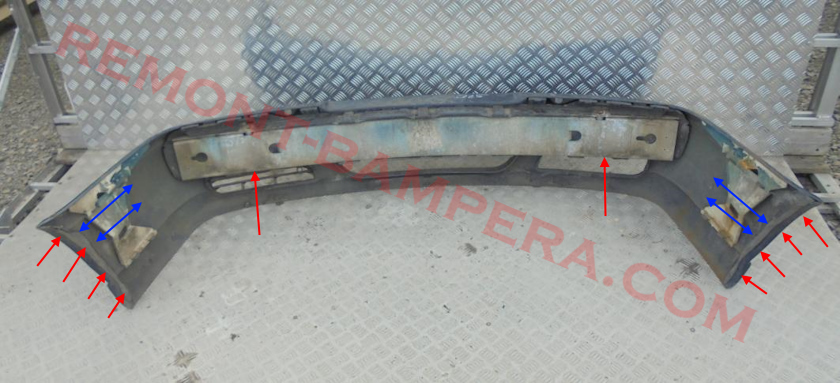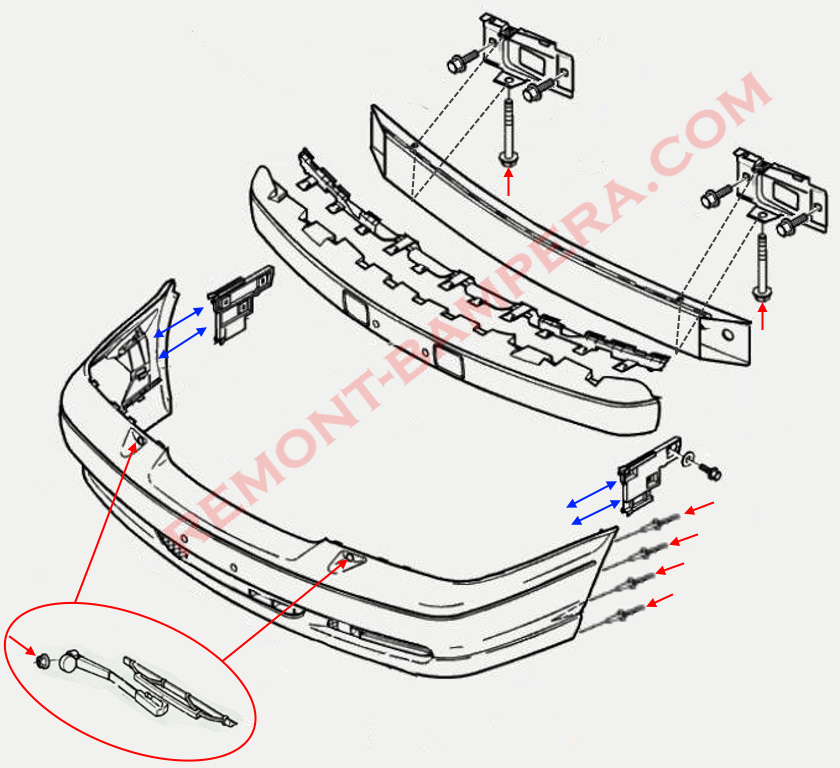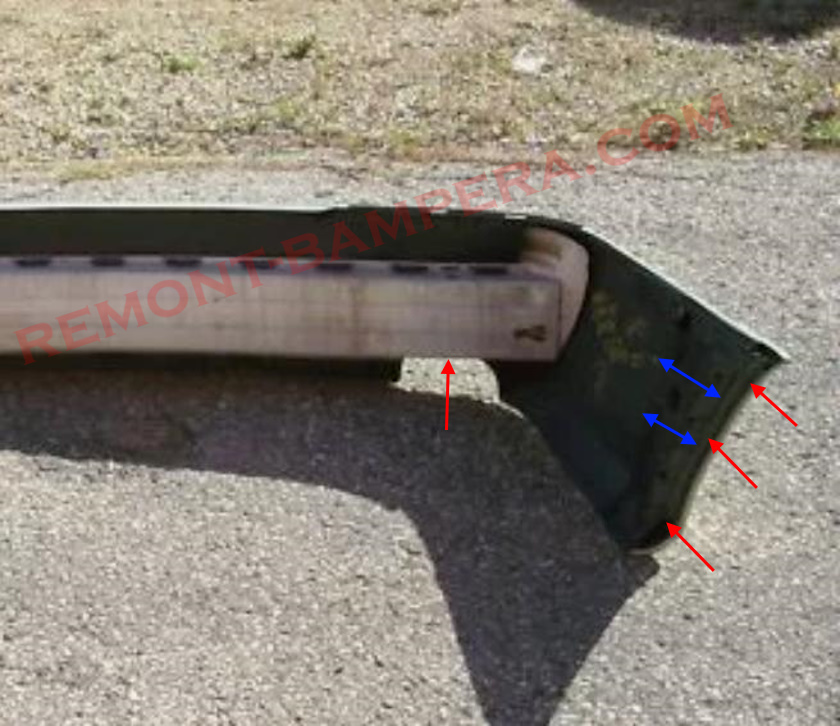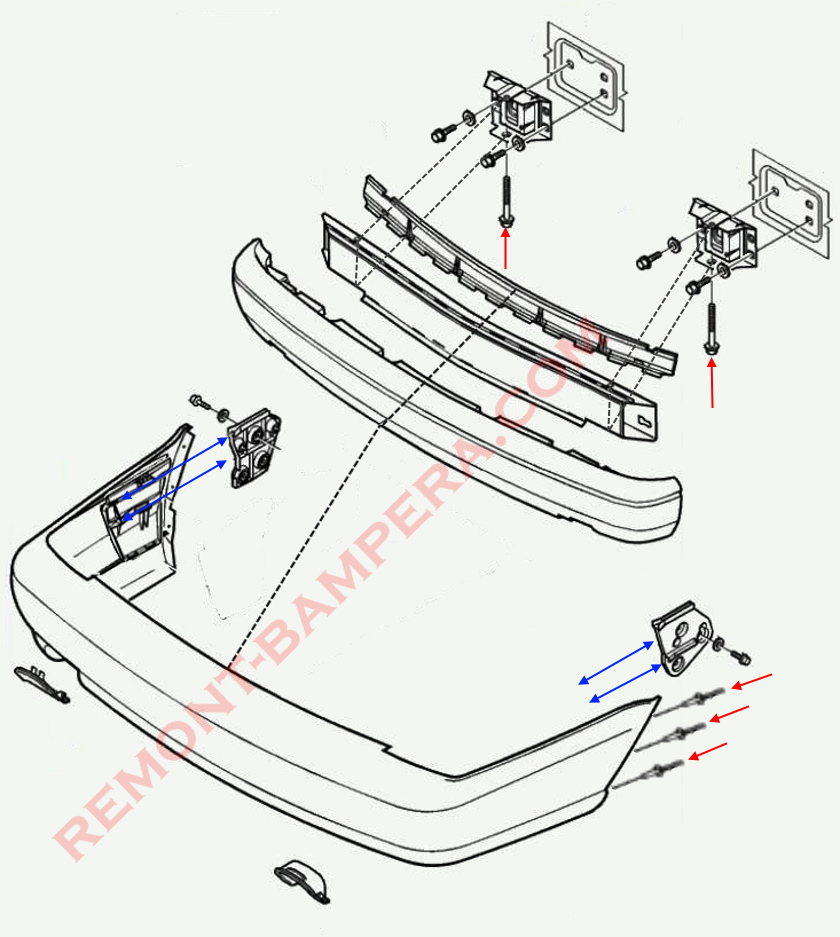Volvo S70 / V70
In the late 1990s, Volvo updated its lineup by introducing successors to the popular 850 models—the S70 (sedan) and V70 (station wagon). These vehicles continued the Swedish brand's tradition of reliability, safety, and understated design. While not revolutionary, they refined their predecessors' concept with added comfort and technology.
Body Types and Features
The range consisted of two variants:
- Volvo S70 – A classic four-door sedan with clean lines and a spacious interior, positioned as a practical family car without unnecessary frills.
- Volvo V70 – A five-door wagon that became a versatile "workhorse" for travel enthusiasts, offering a large cargo area and flexible seating configurations.
Both models shared the same platform, but the V70 was more popular in Europe for its utility, while the S70 appealed more to U.S. buyers for its traditional styling.
Bumper Material (may vary)
Polypropylene, ethylene-propylene-diene terpolymer. Marked >PP+EPDM<
Removing the Front Bumper
- Open the hood.
- Remove one nut on each side and detach the wipers along with the headlight washer arms, disconnecting the hoses from the nozzles.
- In the wheel arches, remove four metal rivets per side (if the bumper has been removed before, screws or plastic fasteners may be used instead).
- Underneath, unscrew two long bolts (inserted bottom-up) securing the metal reinforcement to the brackets (requires a socket wrench and extension).
- With an assistant, carefully slide the bumper forward off the guide rails in the fenders (avoid damaging any wiring).
- Disconnect any electrical connectors (if equipped).


Removing the Rear Bumper
- Open the tailgate.
- In the wheel wells, drill out three metal rivets per side (may be replaced with screws if previously removed).
- Under the vehicle, unscrew two long bolts (inserted bottom-up) that secure the reinforcement to the chassis-mounted brackets.
- With help, pull the bumper rearward off the guide rails in the quarter panels.
- Disconnect any electrical connectors (if equipped).


Design and Interior
The S70 and V70 featured Scandinavian restraint in their styling—smooth lines, a signature grille, and rectangular headlights. Compared to the 850, the design was slightly more rounded but not radically changed.
The interior showcased Volvo’s attention to detail:
- High-quality materials (fabric, leather, wood)
- Comfortable seats with good lateral support
- Simple, intuitive dashboard layout
- Spacious cargo area in the V70 (up to 1,600 liters with seats folded)
A distinctive feature was the "waterfall" center console, which became a hallmark of Volvos from this era.
Technical Specifications
Engine options included:
- Gasoline: From a modest 2.0L (126 hp) to a potent 2.4L Turbo (200+ hp)
- Diesel: Rare but fuel-efficient choices for Europe
- AWD: Available on top-tier models with Volvo’s Automatic Wheel Drive system
Transmissions: 5-speed manual or 4-speed automatic. Performance was adequate for relaxed driving.
Safety remained a strong point, with features like airbags, ABS, side-impact protection (SIPS), and early stability control (DSTC on later models).
Interesting Facts
- R Models: The 1998 V70 R was a high-performance wagon (250 hp) with sport-tuned suspension.
- Movie Star: The V70 appeared in films like American Beauty (1999).
- Last of the Classic Volvos: These models ended the P80 platform era before being replaced by the P2-based S60 and second-gen V70.
- Taxi Favorite: Many V70s in Europe surpassed 300,000 km thanks to their durability.
Conclusion
The Volvo S70 and V70 epitomized Swedish automotive values—understated, reliable, safe, and practical. Rather than competing with German luxury brands, they offered sensible quality at a reasonable price. Today, enthusiasts appreciate these cars for their robust engineering and longevity. If you want a distinctive, well-built family car, the S70 or V70 remains an excellent choice.

 English
English  Italiano
Italiano  Français
Français  русский
русский  Deutsch
Deutsch  Español
Español